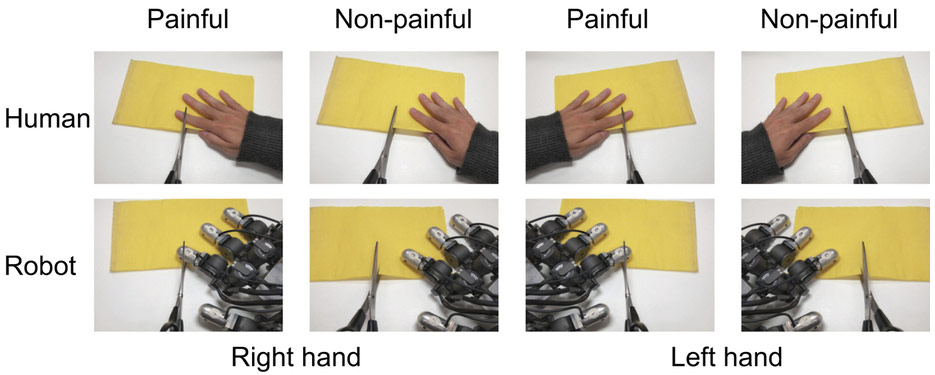Research Abstract
ヒトおよびロボットの手の痛みに対する共感を脳波記録法を用いて計測
Measuring empathy for human and robot hand pain using electroencephalography
2015年11月3日 Scientific Reports 5 : 15924 doi: 10.1038/srep15924

本研究では、ヒトがロボットの痛みに共感できることを生理学的に初めて証明し、また、ヒトへの共感とロボットへの共感の生理学的な違いも明らかにしています。我々は15人の健康な成人に、痛そうな状況の写真(例えば,ヒトもしくはロボットの手の指にナイフがかかっている)と、痛くなさそうな状況の写真を見てもらい、脳波を計測しました。その結果、被験者の脳波では、写真に写っているのがヒトの手かロボットの手かに関わらず、手が痛くなさそうな状況の写真よりも痛そうな状況の写真を見た場合の方でP3成分の後半部分が大きくなりました。それに対して、前頭−中心部の電極で捉えたP3成分の前半部分は、痛そうな状況のヒトの手の写真では増大しましたが、痛そうな状況のロボットの手の写真では増大しませんでした。ただし、これに関する分散分析(ANOVA)の交互作用は有意水準に僅かに届かない程度でした。これらの結果は、我々がヒト型ロボットに対して、他人に対するのと同様に,特にトップダウン処理の後期において共感することを示唆しています。しかし、こうした共感のトップダウン処理の開始部分は、相手がロボットだとヒトの場合よりも弱いのでしょう。
Yutaka Suzuki, Lisa Galli, Ayaka Ikeda, Shoji Itakura & Michiteru Kitazaki
Corresponding Author
This study provides the first physiological evidence of humans’ ability to empathize with robot pain and highlights the difference in empathy for humans and robots. We performed electroencephalography in 15 healthy adults who observed either human- or robot-hand pictures in painful or non-painful situations such as a finger cut by a knife. We found that the descending phase of the P3 component was larger for the painful stimuli than the non-painful stimuli, regardless of whether the hand belonged to a human or robot. In contrast, the ascending phase of the P3 component at the frontal-central electrodes was increased by painful human stimuli but not painful robot stimuli, though the interaction of ANOVA was not significant, but marginal. These results suggest that we empathize with humanoid robots in late top-down processing similarly to human others. However, the beginning of the top-down process of empathy is weaker for robots than for humans.

